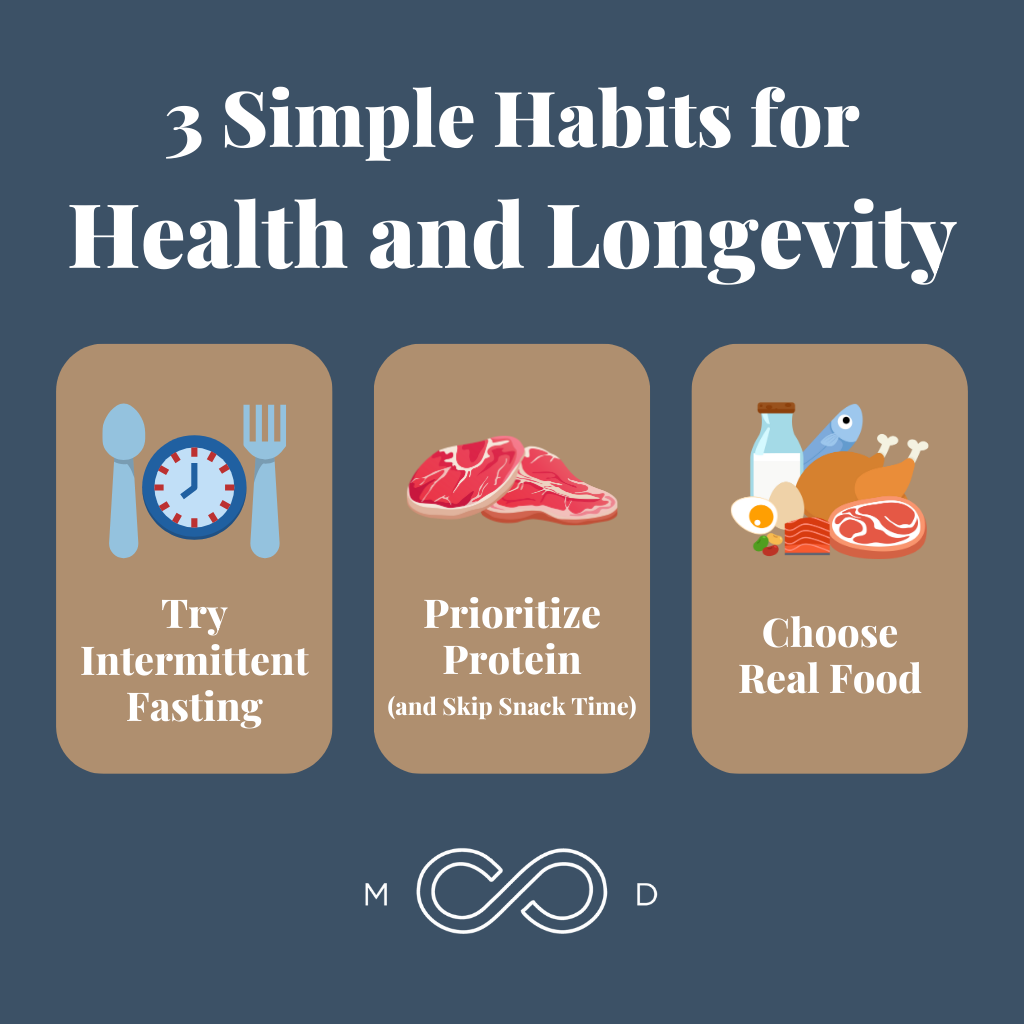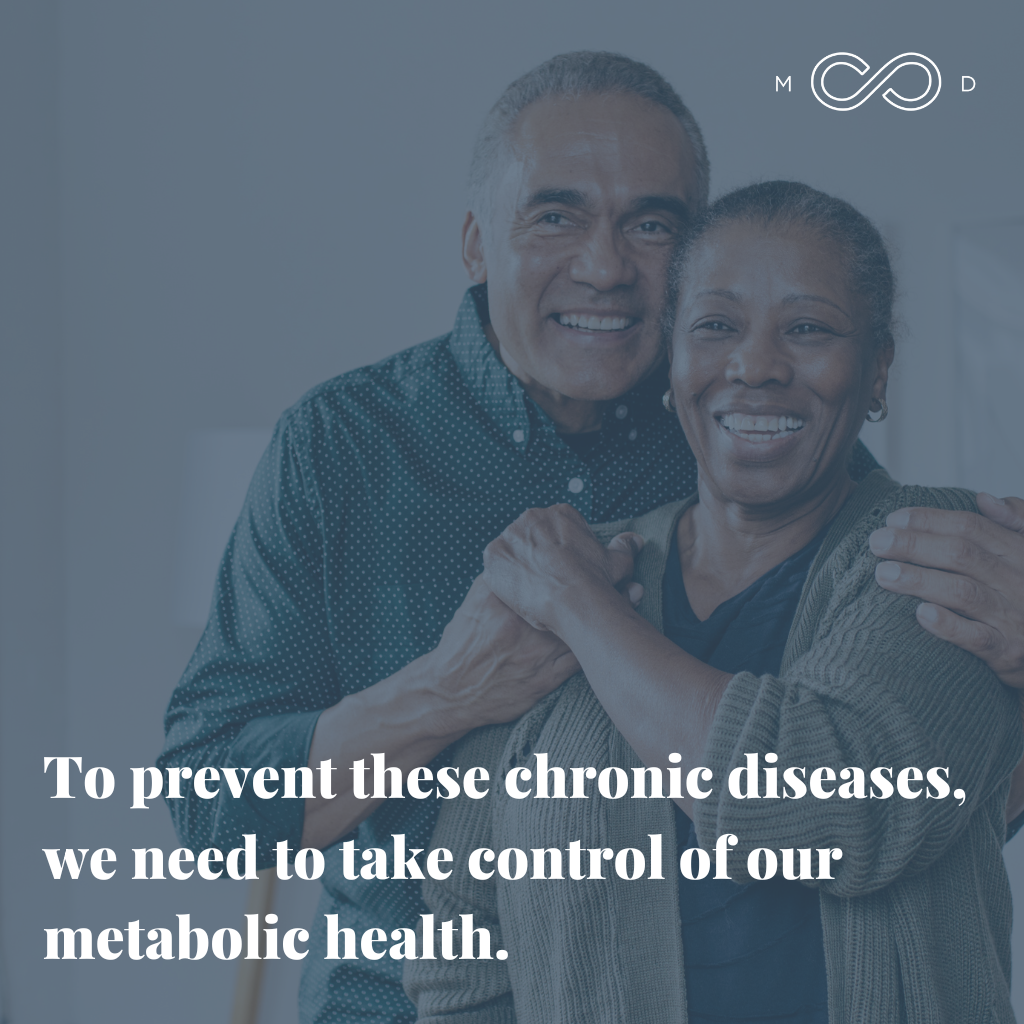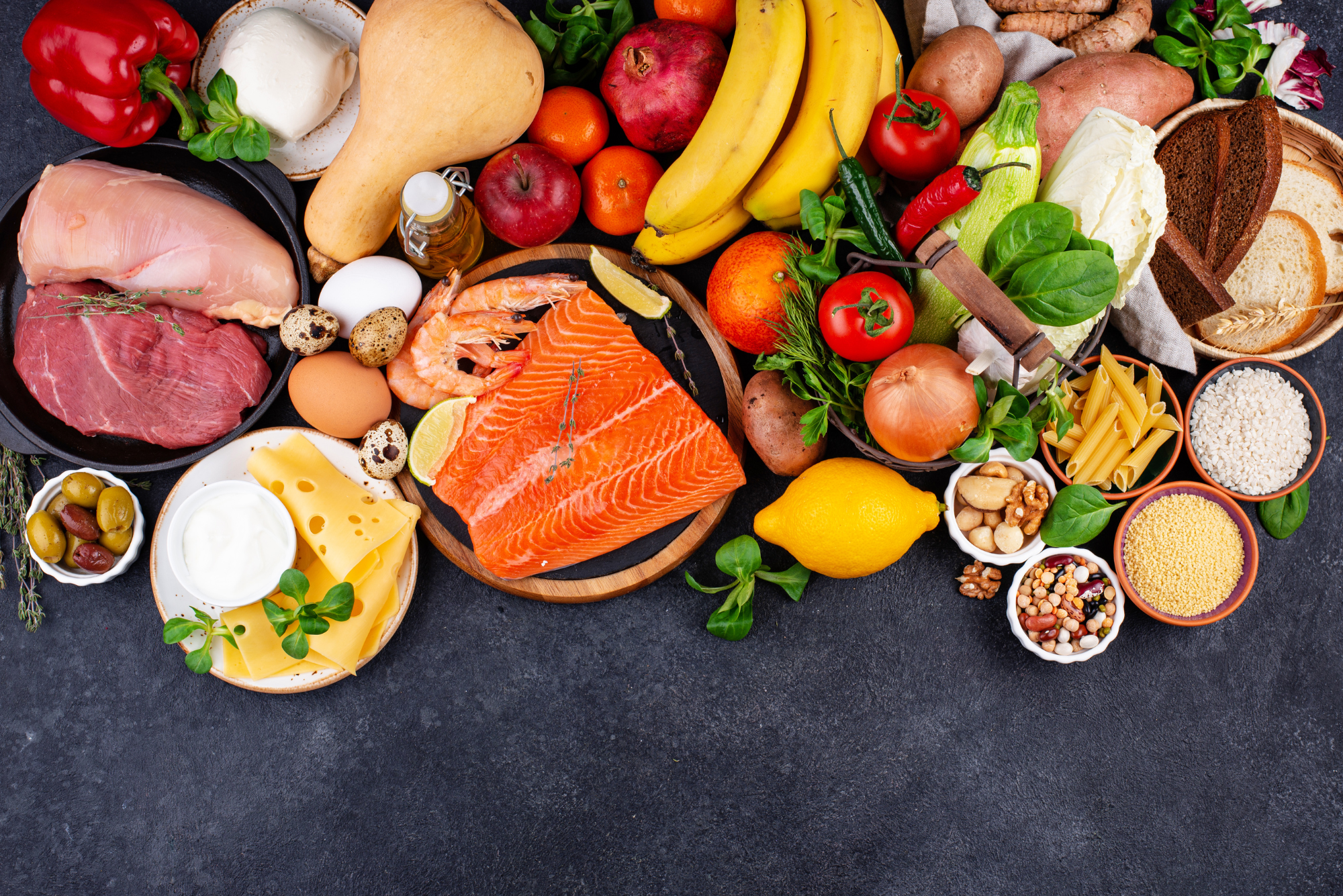Download file | Play in new window | 00:32:00 |
As a concierge doctor, I’m committed to helping my patients live their longest, healthiest lives. What that comes down to is taking every action possible to delay chronic disease, especially metabolic disease.
Why metabolic disease? Simple. This one disease leads to many of the top killers of humans today, such as heart disease, cancer, and dementia.
To prevent these chronic diseases, we need to take control of our metabolic health. One of the most important ways to do that is through our dietary habits.
Don’t worry; I’m not here to prescribe some new restrictive meal plan that takes all the joy out of life. Instead, I want to share three simple dietary habits you can implement this year to improve your metabolic health and keep chronic illness at bay.

Habit 1: Give Intermittent Fasting a Try
After years of experience helping people take charge of their metabolic health, we strongly believe in the power of a fasted lifestyle.
How Fasting Works
You’ve probably heard of intermittent fasting, which I define as consuming zero calories for at least 12 hours. This puts the body into a fasted state, allowing it to accomplish all the beneficial, restorative activities it needs without interruption from the introduction of new food.
The idea of intermittent fasting may sound difficult at first, but most people find it far easier and more sustainable than any other “diet” plan.
One reason is that we don’t recommend fasting for days on end. Fasting for more than 24 hours may contribute to lean muscle loss, which is detrimental to metabolic health and a key risk factor as we age.
For many, the maximum fasting benefit likely comes from a 16:8 split, or fasting for 16 consecutive hours and eating within the remaining eight hours. But intermittent fasting is adaptable to various lifestyles and abilities, and you can choose the split that works best for you.
If a 12:12 or 14:10 split makes more sense for you, that’s great! As long as it’s sustainable, either will confer real metabolic benefit.
When to Fast
Another factor that makes intermittent fasting relatively simple is that the bulk of your fast occurs when you’re asleep. The rest is only a matter of skipping breakfast or dinner.
Some people opt to skip dinner, but for most people, skipping breakfast seems easiest. Neither way is “correct” or “better.” All that matters is what best helps you achieve a prolonged fast.
A quick note on breakfast: Due to some very old, very clever marketing, many Americans have been conditioned to believe breakfast is the most important meal of the day. Even if that were true (and research indicates otherwise), it wouldn’t mean you have to wake up and eat right away. Breakfast literally means the time when you break your fast — and that can happen at any time of day.
Immediate Benefits of Intermittent Fasting
Besides its long-term metabolic advantages, intermittent fasting delivers two immediate benefits:
Reduced Decision Fatigue
We only have the ability to make so many good decisions in a day. By eliminating one-third of your food-related decision points, you greatly reduce the complexity and frequency of decision-making. With the increasing demand for decisions in our fast-paced world, intermittent fasting is an excellent hedge against decision fatigue.
Reduced Calorie Intake
You might think that people who fast simply make up for those skipped calories by eating more later. But that doesn’t tend to be the case.
In practice, by reducing the number of times you sit down to eat by one-third, you automatically reduce your overall calorie intake as well. This framework offers a unique opportunity to control calorie intake without imposing unsustainable restrictions on every meal.
Habit 2: Prioritize Protein (and Skip Snack Time)
If you can eat anything, what do you eat?
We all face the “omnivore’s dilemma” on a daily basis. As omnivores, we can survive by eating any of the three macronutrients — fats, carbohydrates, and proteins. But if the goal is health and longevity — aka staving off chronic metabolic disease — what should we eat?
Because insulin resistance is the harbinger of metabolic disease, our North Star becomes eating in a way that keeps blood sugar as stable as possible for as long as possible. To accomplish this, my suggestion is simple: Prioritize protein.
You don’t need to get into complicated ratios or restrictive recommendations around macronutrients. Instead, simply change the order and emphasis of what you eat by prioritizing protein at meal times.
Eat Enough Protein, First
I like the way Dr. Mark Hyman puts it: Muscle is the currency of health (and healthy aging).
If your body doesn’t get adequate protein, it turns to your lean muscle, breaking down tissue to fill its protein needs. So, to maintain healthy lean muscle mass, people need to consume 0.5 to 1 gram of protein per kilogram of ideal body weight.
To give you an idea of what that looks like without all the math, it comes to:
- For the average woman: at least 60 grams of protein daily
- For the average man: at least 100 grams of protein daily
And that’s just for maintenance. If you set an ambitious lean-muscle-building goal, you’ll need to increase that amount, perhaps even double it.
Getting this much protein per day may seem challenging — at first. But as you shift your approach toward protein-forward eating, you’ll find a cadence that works for you. And the side effects of improved strength training, shifting body composition, and increased satiety will only spur you on.
The Problem With Grazing
Speaking of increased satiety, one bonus of protein-forward meals is that you feel fuller for longer, reducing the desire to snack or graze.
We’re not grazing creatures. Our bodies work far better when we give them long stretches between meals. The primary issue here is that snacking tends to keep your blood glucose and insulin levels elevated, mapping you toward insulin resistance and metabolic disease.
For this reason, though there’s some debate over the matter, I don’t at this time advise getting your additional protein through snacking. If you’re anything like me, if you give snacking an inch, it’ll take a mile. Sure, you may get in a few more grams of protein, but you’ll also ride that slippery slope into enough carbs and processed goodies to keep your blood sugar soaring for a whole day.
To avoid the “amnesia calories” that come with snacking — and to preserve my willpower for when I need it — I prefer to cut out grazing altogether.
Habit 3: Choose Real Food
One of the best strategies you can pick up to foster a healthy, pro-longevity diet is to prioritize real food.
What is “real food”? As a general principle, if it wasn’t food 100 years ago, it ain’t food.
Eating real food takes a little more effort and planning than eating the heavily processed convenience foods so readily available in our busy modern environment. But real food delivers nutrition, satiety, and a sense of wellness that processed foods just can’t match. Whenever possible, I always prefer farm to table over factory to table.
That said, I’m not against all processed foods. I simply don’t think fake food should be a replacement for real food.
However, certain products, like protein shakes, can contribute real value when consumed in addition to real foods. Take the daily protein recommendations above, for example.
Getting adequate protein in a low-processed food environment, all while maintaining control of calorie intake, can be challenging for many, especially in the beginning. Consuming animal-based protein when possible helps — because though you can hit your minimum with plant-based proteins, it’s a far greater challenge. But having a protein shake after a workout can help, too.
The key here? The protein shake doesn’t replace a meal. It’s simply a tool to augment an already healthy diet.

Tips for Getting Started
Not sure where to start? Consider a few simple tips to get moving in the right direction:
- Start with when you eat, not what you eat. It’s far too easy to get overwhelmed with what you eat. When you eat is far easier. Decide whether you’ll skip dinner or breakfast, and get started. If you only make one change to your diet, let this be it — because a fasted lifestyle is a health superpower.
- Cut out a snack or two. Take a small step. Try cutting out an afternoon snack; toss those highly processed convenience foods; or eat a heartier meal and avoid the pantry for a designated period afterward.
- Keep a brief food journal. An objective record of what you eat and how it makes you feel can be very illuminating. Note these down for a few consecutive days, then review the results for a more accurate picture of what you eat and how it affects you.
Change Your Approach to Diet
The word “diet” has picked up a lot of baggage over the years, especially related to its association with weight loss. But everyone has a diet; it’s just the food you choose to eat.
How you feed your body is one of the indisputable pillars of human health. And as long as you’re on this planet, it’s going to matter.
Though improving your diet can certainly help you lose weight, longevity offers an even deeper and more far-reaching motivation. It’s not just about looking good at the beach next summer; it’s about keeping your heart, your brain, and your body functioning optimally well into the later years of life.

Dr. Aaron Wenzel is a concierge physician specializing in the care of fast-moving entrepreneurs, executives, and public figures in the Nashville, TN area. Dr. Wenzel’s diverse life experience and extensive training in family medicine, emergency care, nutrition, and hormone replacement therapies give him the unique platform to provide unmatched care for his patients.







